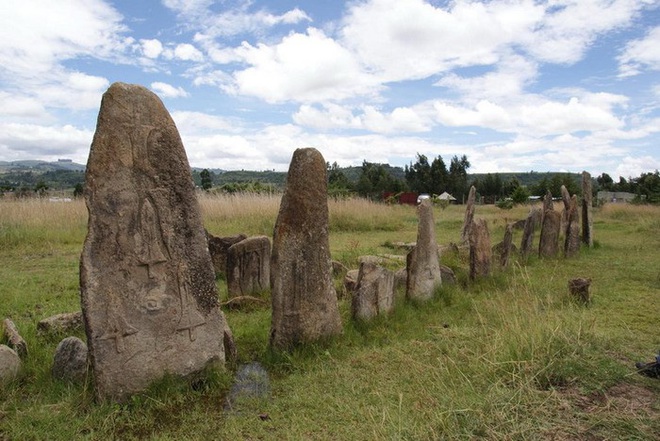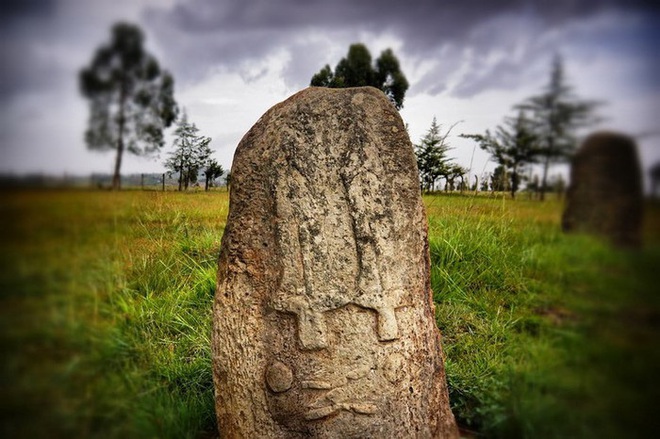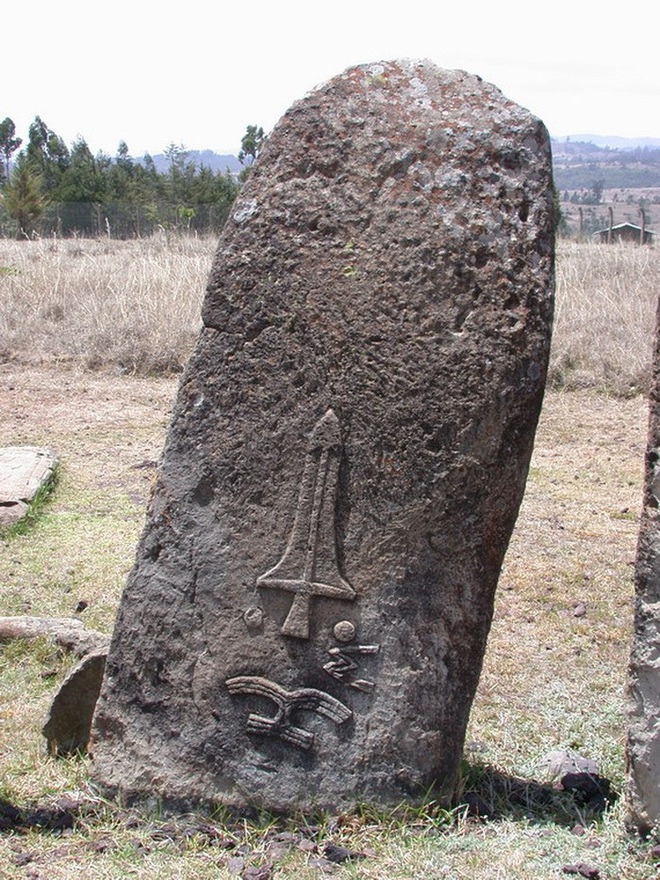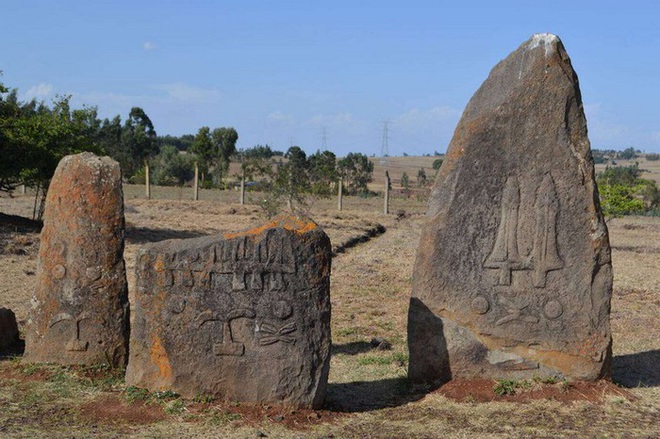In April 1935, a giant rock engraved with the symbol of a sword was discovered during a German archaeological expedition in Ethiopia. Local residents call this the Yegran Dingay stele, carved in granite.
In addition to information related to the ruler of the ancient Adal kingdom, researchers since then have not revealed many more mysteries about the Yegran Dingay stones. Over the course of nearly 100 years, many other stones have been discovered in Ethiopia, but their origin and significance remain unexplained.

Monolithic rocks more than 5 meters high in many places are gathered in the Tiya area, where there are many carved rocks with mysterious shapes.
There are nearly 50 rocks here, 22 of which are engraved with the symbol of the Tiya bear, while the rest are carved with diverse shapes including people, weapons and symbols. The meaning of these symbols has not yet been deciphered by researchers. It is known that there are about 100 other rocks scattered in different parts of Ethiopia.

Through statistics, the Yegran Dingay relics are classified into 3 types. The Anthropomorphic type looks like stone figures carved in an abstract style. Anthropomorphic ones have been found depicting the figure standing, leaning on the hips or resting the chin on the hand etc.
The second type, Phalic, is monolithic rocks with a height of about 4-5 meters and carved with various shapes from animals, plants to living utensils. The last type, Non-Phalic, are tall, thinner pillars of stone than the above two types and often have the shape of weapons engraved on them.

There is more or less a connection between the Yegran Dingay rocks and the ancient warriors. Near the beach area, Tiya has discovered a number of remains dating back to about the 14th century. These are not the people who made Yegran Dingay, but it seems that these warriors came to Tiya and used the rock as temporary camp site.

Dated between the 10th and 15th centuries, this mysterious rock carving shows that there once was an ancient culture that flourished in Ethiopia. Each rock is considered a work of art and is recognized by UNESCO as a World Heritage Site.
The site of Tiya Rocks combined with many other World Heritage Sites including Axum, Lalibela, Semien Mountain National Park, Fasiledes Castle, Awash River Valley, Holy City of Harar, all belong to ancient civilizations in Ethiopia. Unfortunately, the archeology of this country still has many limitations to be able to uncover the mysteries.







